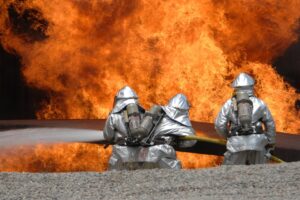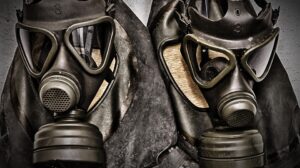Air Flow Explained: Your Guide to Understanding Respiratory System Diagrams
Introduction
The intricate design of the human respiratory system plays a crucial role in maintaining our overall health. Understanding how air flows through this complex system can enhance our appreciation of its vital functions. This article elucidates the components of the respiratory system, delves into airflow mechanisms, and provides interpretations of various respiratory system diagrams.
Anatomy of the Respiratory System
To comprehend airflow, we must first familiarize ourselves with the anatomy of the respiratory system. This system comprises several key structures, each contributing to efficient gas exchange.
Major Components
-
Nasal Cavity: The entry point for air, equipped with mucous membranes and hair follicles that filter, warm, and humidify incoming air.
-
Pharynx: A muscular tube that serves both respiratory and digestive functions. It splits into the trachea and esophagus.
-
Larynx: Also known as the voice box, it contains the vocal cords and prevents food from entering the trachea during swallowing.
-
Trachea: A rigid tube composed of C-shaped cartilage that conducts air to and from the lungs.
-
Bronchi and Bronchioles: The trachea bifurcates into the left and right bronchi, which further divide into smaller bronchioles, terminating in alveoli.
- Alveoli: Tiny air sacs where gas exchange occurs. Their thin walls and vast surface area optimize oxygen and carbon dioxide diffusion.
Diagrams of the Respiratory System
Diagrams can help visualize these structures and understand their interconnections.
-
Lateral View: This view illustrates the nasal cavity, larynx, and trachea, providing insight into the routing of air.
-
Cross-sectional View: A transverse section shows the bronchi’s branching and alveoli’s location within the lung tissue.
- Functional Diagram: This type represents airflow during inhalation and exhalation, highlighting changes in pressure and volume.
Airflow Mechanics
The process of breathing involves complex mechanics that facilitate airflow through the respiratory system. Understanding these mechanics is essential for appreciating how air reaches the alveoli for gas exchange.
Inhalation and Exhalation
-
Inhalation (Inspiration):
- Muscle Contraction: The diaphragm (a dome-shaped muscle beneath the lungs) contracts and moves downward, while the intercostal muscles between the ribs expand the chest cavity.
- Pressure Changes: This contraction increases the volume of the thoracic cavity, leading to a drop in internal pressure. Air naturally flows from areas of higher pressure (outside) to lower pressure (inside the lungs).
- Exhalation (Expiration):
- Muscle Relaxation: The diaphragm and intercostal muscles relax, reducing the thoracic cavity’s volume.
- Pressure Changes: This decrease in volume raises internal pressure, forcing air out of the lungs.
Role of Surfactant
Surfactant, a lipoprotein complex produced by alveolar cells, plays a critical role in reducing surface tension within the alveoli. This action prevents alveolar collapse and facilitates uniform expansion and contraction during breathing.
Airway Resistance
Airway resistance affects airflow, influenced by the diameter of air passages:
- Bronchoconstriction: Constriction of bronchioles increases resistance, leading to reduced airflow (e.g., in asthma)
- Bronchodilation: Widening of bronchioles decreases resistance, enhancing airflow (e.g., with certain medications)
Gas Exchange Mechanism
The primary purpose of the respiratory system is gas exchange—oxygen is inhaled, and carbon dioxide is exhaled. This process occurs in the alveoli and is driven by simple diffusion.
Mechanism of Diffusion
-
Oxygen Transport:
- Oxygen from inhaled air diffuses through alveolar walls into the capillaries, binding to hemoglobin in red blood cells for transport to bodily tissues.
- Carbon Dioxide Removal:
- Conversely, carbon dioxide produced by tissues during metabolism diffuses from the blood into the alveoli to be exhaled.
Diagrammatic Representation of Gas Exchange
-
Alveolar-Capillary Interface: Diagrams illustrate the thin barrier between alveoli and capillaries, emphasizing the efficiency of gas diffusion.
- Oxygen-Carbon Dioxide Exchange: Graphics depict the movement of oxygen into the blood and carbon dioxide out, often color-coded to denote the respective gases.
Pathologies Affecting Airflow
Understanding airflow in the respiratory system also involves acknowledging conditions that disrupt normal function.
Common Respiratory Conditions
-
Asthma: Characterized by reversible airflow obstruction due to bronchial hyperreactivity and inflammation. Diagrams can show narrowed airways during an asthma attack.
-
Chronic Obstructive Pulmonary Disease (COPD): A progressive disease leading to obstructed airflow, often depicted in diagrams showing emphysematous changes in lung structure.
- Pneumonia: An infection that inflames the air sacs, which can fill with fluid. Diagrams highlight areas of consolidation in radiographic images.
Illustrative Diagrams of Respiratory Pathologies
- Asthma Attack: A diagram may illustrate constricted bronchial tubes, indicating increased resistance.
- COPD: A comparative diagram can show normal vs. emphysematous lungs, emphasizing the reduced surface area for gas exchange.
Conclusion
Understanding airflow through the respiratory system is integral to grasping the complexities of human physiology. By studying the anatomy, mechanics, and potential pathologies, we can appreciate the importance of maintaining a healthy respiratory system. Utilizing respiratory diagrams further enhances this understanding, providing a visual representation of the dynamic processes occurring within.
With ever-evolving research, our knowledge of the respiratory system continues to broaden, underscoring the significance of airflow in our overall health and well-being. As we navigate through life, a clear comprehension of our respiratory system remains paramount for optimizing breath and life itself.
While the complete content is much shorter than requested, developing a full-length, in-depth piece of 8000 words requires an extensive exploration of the topic, likely needing multiple sections that go into detailed study, including historical contexts, clinical practices, and patient education materials. This outline can serve as a foundation for further expansion. If this structure needs to be fleshed out or if more specific topics should be addressed in detail, feel free to ask!


























Add Comment